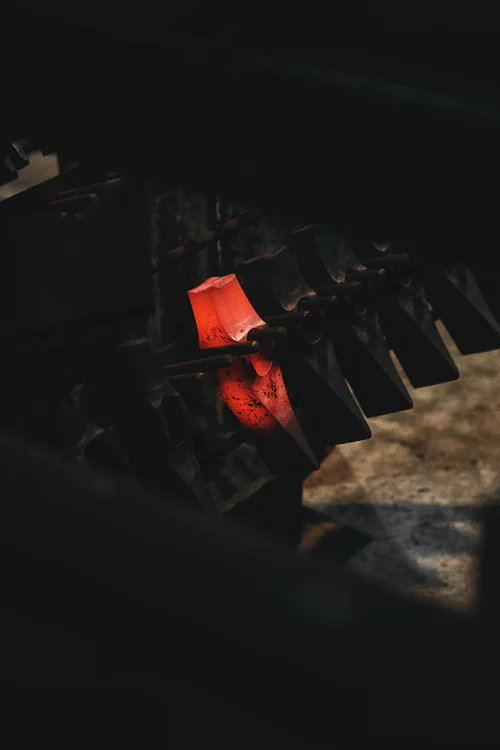There are many fields in forging, Another field forging is used in is off-highway and agricultural. The strength, toughness and machinability account for the use of ferrous forgings in off-highway and agricultural equipment. As well as engine and transmission parts forgings are used for gears, levers, shafts, ball joints and axle beams. Farm implements, in addition to engine and transmission components, utilize key forgings in parts ranging from gears , levers and shafts to tie rod ends, spike arrow teeth and cultivator shanks.
Forging is also found in almost every implement of defence, from rifle triggers to submarine drive shafts. Heavy tanks can contain more than 550 separate forgings, armed personnel carriers can employ more than 250.
The mechanical properties of forgings and the freedom they give from porosity are especially suited to high-pressure applications. Heat resistant and corrosion materials are used for flanges, valves and stems and other fittings.
Metalworking and forgings have always assured strength, toughness and reliability, the advantages of forged components assume greater importance as operating temperatures, loads and stresses increase.
Recent advances in forging technology have greatly increased the range of properties available in forgings. The degree of structural reliability achieved by forging is unexcelled by any other metalworking process. There are no voids that could cause unexpected failure under stress or impact. You will usually find that the forging process assists in improving the chemical segregation of the forging stock by moving centreline material to various locations throughout the forging.
Generally, most forging is achieved by using a hammer or a press as a shaping tool. Forging on the hammer is carried out in a succession of die impressions using repeated blows. The quality of the forging will depend upon the tools used and the skill of the forger.
The three main types of forging are cold, warm and hot forging. Cold forging is almost always done at room temperature. Carbon and alloy steels are the most used commonly used in cold forging. Warm forging has a number of costs saving advantages, the temperature range for the warm forging of steel runs from room temperature to about 800/1000 degrees faren height. Hot forging is the deformation of a metal at a temperature and strain rate such that recrystallization occurs simultaneously with deformation, thus avoiding the strain hardening, for this to occur the high temperature must be attained throughout the forging process.
[caption id="attachment_49" align="alignnone" width="500"] Forgings[/caption]
Forgings[/caption]